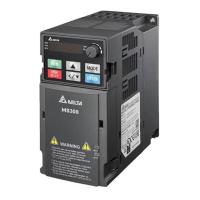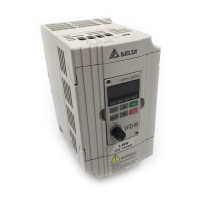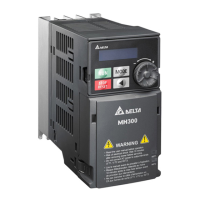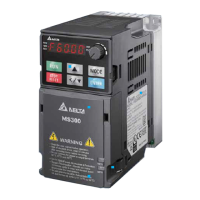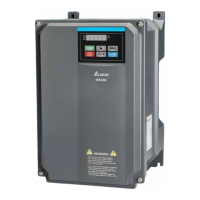Chapter 7 Optional AccessoriesME300
7-4 AC / DC Reactor
AC input reactor
Installing an AC reactor on the input side of an AC motor drive can increase line impedance, improve
the power factor, reduce input current, and reduce interference generated from the motor drive. It also
reduces momentary voltage surges or abnormal current spikes. For example, when the main power
capacity is higher than 500 kVA, or when using a switching capacitor bank, momentary voltage and current
spikes may damage the AC motor drive’s internal circuit. An AC reactor on the input side of the AC motor
drive protects it by suppressing surges.
Installation: Install an AC input reactor in drives with the main power to the three input phases R S T.
Figure 7-4
AC Output Reactor
GF (Ground Fault), OC (Over-current) and voltage over-shoot easily occur when the drive is applied
for long output conduit. GF and OC may cause the drive to malfunction due to the drive’s self-protective
mechanism; voltage over-shoot causes damage to motor insulation.
Too long an output conduit may trigger larger parasitic capacitances to the ground and higher three-
phase output common mode current, further making the drive activate the GF protection. Moreover, the
larger line-to-line and line-to-ground parasitic capacitances lead to inrush current, making the drive’s over-
outputted current enable OC protection. To prevent this, connecting a reactor to the output terminals of the
drive can usually increase high frequency resistance and reduce the current generated from parasitic
capacitances.
Installation: Install an AC output reactor in drives with the main power to the three input phases U V W.
Figure 7-5

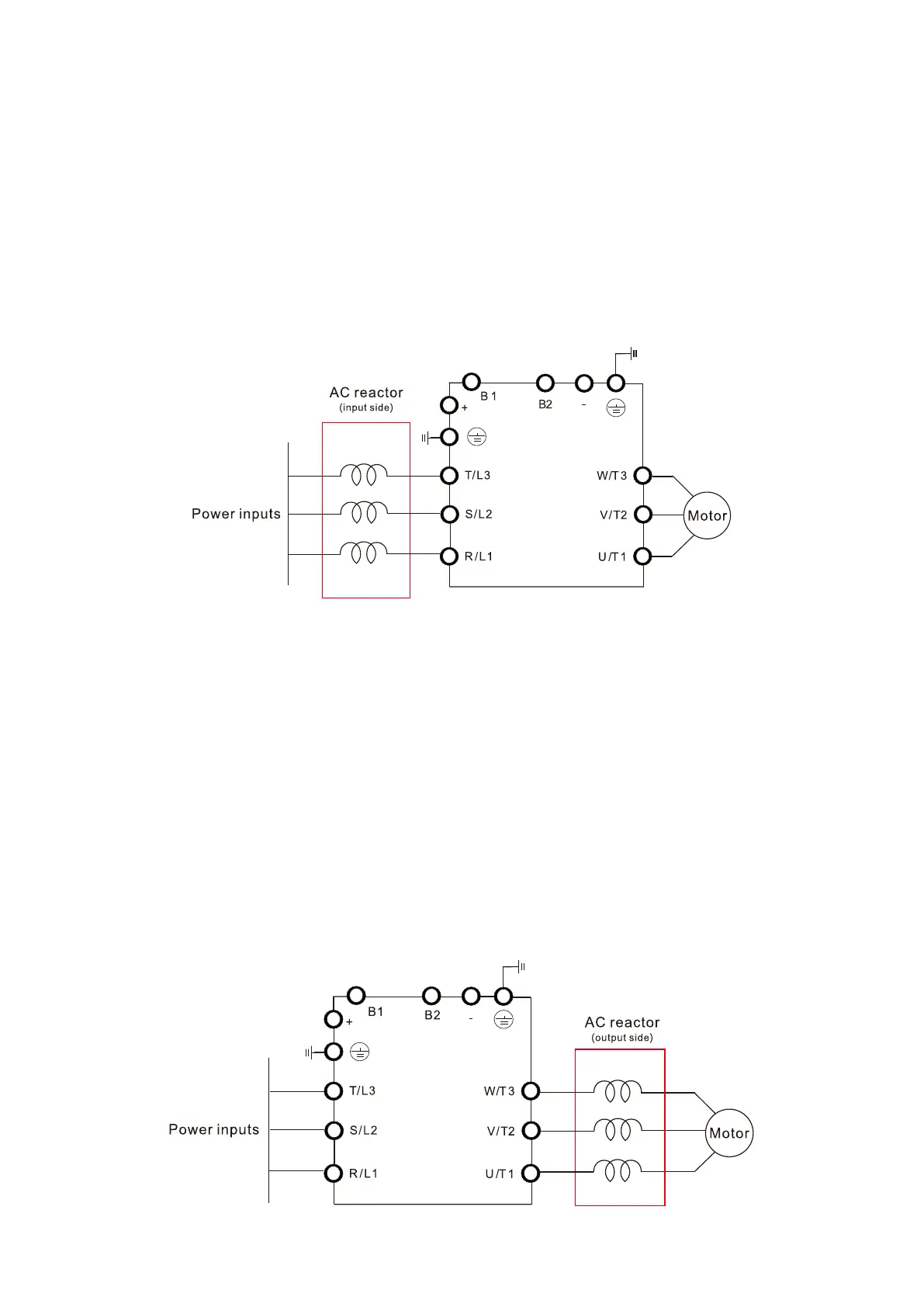